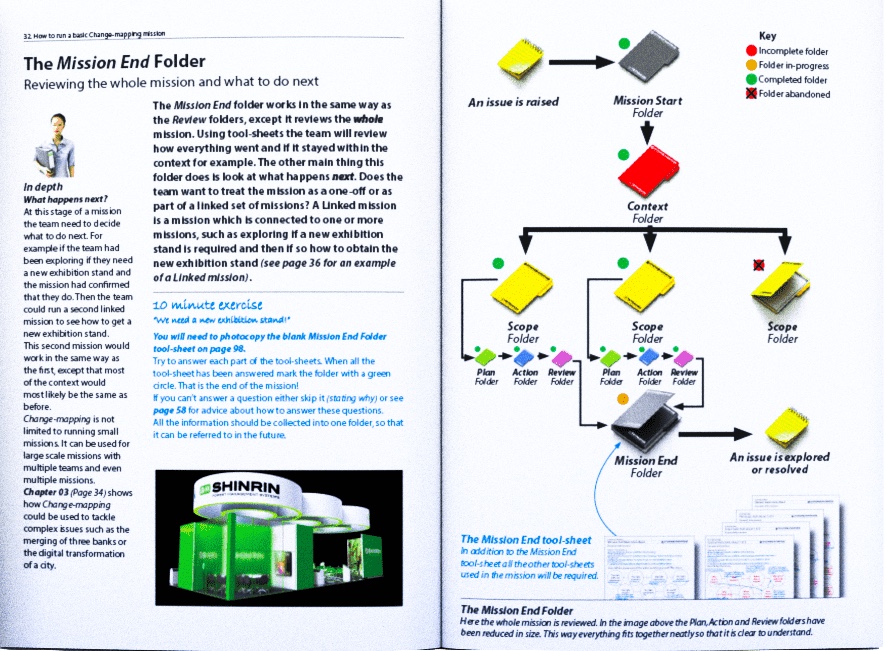On Change-mapping – books and more
Our new book is out! – ‘Change-mapping: Connecting business tools to manage change‘.
(‘Our’ because it was a collaborative effort between myself and designer Joseph Chittenden, who contributed not just the graphics and layout but much more besides… – huge thanks to Joe from me! I also owe huge thanks to all our patrons on Patreon, who’ve helped enormously in bringing this project to fruition.)
This is the first book in what will be at least a three-part-series:
- ‘Change-mapping‘ – introduction to change-mapping in real-world practice
- ‘Tools for Change-mapping‘ – real-world scenarios for change-mapping, and tools to draw out the next level of detail
- ‘Advanced Change-mapping‘ – change-mapping applied to large, complex difficult challenges
All of these books are very visual, intended to be usable straight away by just about anyone working with any kind of change in organisations and beyond. For example, in the first book we start with a quick introduction to the overall workflow:
…then move on to more of the step-by-step detail:
…using simple toolsheets to capture essential information – each shown with a worked-example to the left, and a blank toolsheet to the right:
…and then, with practical experience in the basics, move on to more subtle issues such as how to avoid ‘getting lost down the rabbit-hole’ of detail itself:
…and finally some initial guidance on how to use the same methods to tackle more complex and more challenging types of change:
My previous books on enterprise-architecture have all been somewhat technical, and written for a technical audience. This series isn’t: it really is for everyone. Anyone who needs to work with change.
But what is change-mapping? What does it do? What’s the point?
Quick answer: it’s a way to tackle change.
Any type of change.
Always the same way, any content, any context, any scope, any scale, any level of complexity, any stage of implementation or lifecycle.
Always keep track of where we are, what we’re doing, why we’re doing it, every stage of the action.
Capture ideas, insights, information, always in the same way.
And learn, always, from everything that we do.
It works the same way with Waterfall, with Agile, and with everything in between.
It works the same way with every tool, technique or method – and can work with any tool, technique or method, too.
Everyone who works with change will have their own toolkit, to capture the fine-detail that’s needed for any change. The catch is that, up till now, there’s been almost nothing to link those tools together – especially across the full breadth of an entire enterprise. So the simplest way to understand change-mapping is that if tools are the building-blocks for change, then change-mapping is the glue that holds those building-blocks together.
Done well, that glue is almost invisible – which is why a change-project that works well might seem like it needs no glue. Yet without the discipline that that glue provides, everything falls apart. In the absence of that discipline, we hit up against all those antipatterns that cause failed guidance of change: rush to action, rush to plan (‘solutioneering’), analysis-paralysis, scope-creep, lost-down-the-rabbit-hole and many, many more. Not A Good Idea… – hence why we need the glue that the discipline of change-mapping provides.
We’ll see more on what change-mapping is, how to use it, and how it works, in the next parts in this series.






Leave a Reply